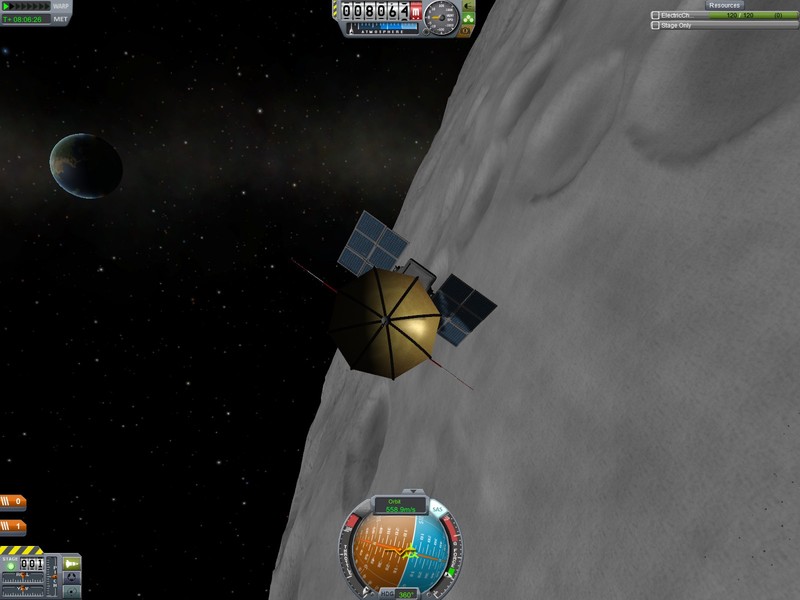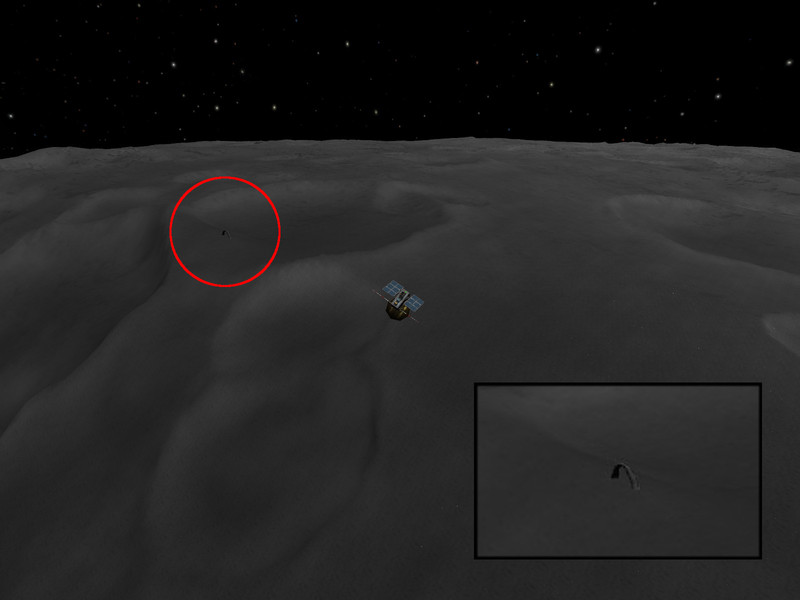Apollo 3
Investigating the Tycho Geologic Anomaly
Having landed kerbonauts on the Mun twice, the Kerbal Space Program was turning its aim to targets further away — Kerbin's second, more distant moon, Minmus, for starters. But some mysterious reports by the Apollo 1 crew on their way to the landing site, which were later confirmed, raised the curiosity of scientists and mission planners.
During the Apollo 1 descent, the kerbonauts reported briefly sighting a strange rock formation a couple dozen kilometeres from their final landing site. But since they had to pay attention to their instruments, this remained purely as trivia: they had probably seen an interplay of shadows or something along those lines.
After the Apollo 1, two Munar Reconaissance Orbiters (MRO1 and MRO2) were put in polar orbit around the Mun with the objective of producing a topographic map of the surface, which would help finding landing spots for future munar landings. MRO1 was put in a 50 km orbit to provide wide-area suverying, while MRO2 (shown below) was put in a grazing 8 km orbit to provide high surface resolution.
During its pass near the Apollo 1 landing site, this is what the MRO2 satellite photographed:
There was definitely something there, something that deserved postponing the Program's plans of space exploration beyond the Mun. And so the Apollo 3 mission was called for. Its main objective: to send a manned crew to investigate the strange formation. Due to its position on the rim of the great Tycho Impact Basin, it was named the Tycho Geologic Anomaly, or TGA-1 for short.
Continue to Munar Rover ...

